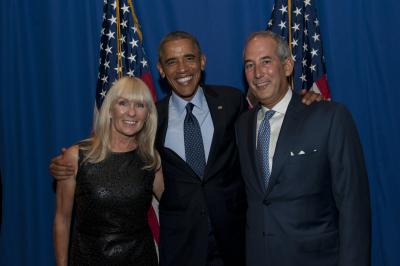This is a post about curved spacetime. Don’t worry I am not going to attempt an amateur explanation of our four-dimensional universe courtesy of Einstein’s Theory of General Relativity. Instead this is a story of how the current generation of kids relates to time and distance in a fundamentally different way from their parents.
I was on a panel the other day with Josh Silverman the ceo of Skype and I told him the story of how my 11 year-old daughter Mariana uses the service to stay close to her friends in London. When I was growing-up in New York in the 1960s and 1970s my family was fortunate to spend our summers in France. I had a group of “Summer friends” whom I only saw a few weeks a year and with the exception of an annual Christmas card did not speak to or correspond with either. I did not dream of calling these friends because international long distance was something reserved for three-minute emergency calls.
Contrast this friendship interruptus with Mariana’s social life. When our family moved back to New York after seven-plus years in London Mariana left behind some very good friends. However rather than falling into her father’s pattern of the occasional Hallmark holiday card and an annual visit Mariana stays involved in the lives of her friends over Skype IM SMS and other modern marvels. The quality of her interactions is also far different than mine were. Mariana remains part of her friends lives in real- or at least near-time. Where I might recount in the Summer or via a card only the highlights of my year these girls stay close to one another and share the more mundane daily texture of their lives.
I think a number of important consequences flow form this change in communication – most of them very positive. First these digital natives only have a single large group of friends as opposed to the geographical clustering of my generation of digital immigrants. This is not to say that space no longer matters at all – we humans even the most modern editions still live more or less in one place. However location need no longer isolate us.
Second the cost of Skype and similar media is essentially zero. This means that communication can continue until there is nothing further to say rather than when your three minutes of phone time or ten words of telegram cost units run out. My mother still tells me that I should call Cousin X when I am in Chicago for a few hours not being able to wrap her brain around the development that time more than cost is the limiting factor when it is no more expensive to call Cousin X from New York than locally.
Third the quality of the narrative changes when neither location nor cost impinges on the message. Mariana and her friends have real conversations – their sampling rates in converting analog life into digital communication streams are high. Accordingly they do not need to fill each other in about what happened in their lives in between messages; they live more synchronously.
I don’t yet know how my children’s lives and relationships will be changed by this bending of spacetime but just as Einstein noted that the position of the observer alters his perception of motion I am just an outsider looking on in wonder.






Internet in general and voice chat in particular have revolutionized communication! I remember when my elder brother moved from Pakistan to the US in the early 90s we would receive a fort-nightly or weekly 3 minute PP (person to person) call through the operator. That call was a family event and the rest of us 5 brothers would get a few seconds each to say hello. Details were left for the letters. Last year I moved to Mauritius for a year and now we have weekly Skype video/voice chats with the family joining in from 4 different countries. Somehow that 3 minute PP aroused more excitement. And the video conferencing and joint voice calls do not replace the joy one would get from reading the letters again and again. But I guess the grass is always greener on the other side of ‘time’. Great post Mr.Glocer. Regards Adeel Hasan Vice President Talent Management AIESEC Mauritius